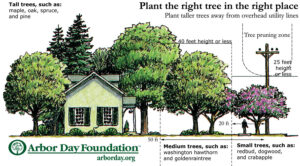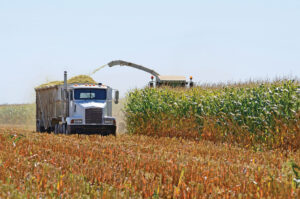 It has been more than 141 years since the first Arbor Day was observed in Nebraska. It has since become a national observance that takes place on the last Friday in April in most states and recognizes the importance of trees as well as tree selection, planting and care. A properly selected and planted tree can add beauty and energy efficiency to your landscape. A poorly selected and planted tree can become high maintenance, dangerous and short-lived. Even digging the hole to plant your new tree can pose a hazard. The Energy Education Council has advice to help you select the tree that is best for your yard.
It has been more than 141 years since the first Arbor Day was observed in Nebraska. It has since become a national observance that takes place on the last Friday in April in most states and recognizes the importance of trees as well as tree selection, planting and care. A properly selected and planted tree can add beauty and energy efficiency to your landscape. A poorly selected and planted tree can become high maintenance, dangerous and short-lived. Even digging the hole to plant your new tree can pose a hazard. The Energy Education Council has advice to help you select the tree that is best for your yard.
This is an excellent time of year for tree planting. With some research and preparation, your tree will be a healthy and beautiful addition to your home for years to come. But before planting your tree do your homework.
One of the first considerations is the purpose of your tree. Will it be needed for shade, a windbreak, or beauty? These considerations will affect what tree is suitable for you, and where it should be planted. Dense evergreens provide a good wind block, while leafy deciduous trees provide shade in the summer.
No matter what purpose the trees will serve, it is always best to choose native trees. They require less maintenance and will live longer. You can get more information about native growing trees from a regional university extension office or a state department of natural resources. In addition, the Arbor Day Foundation has a free tree wizard tool that will help you select the best tree for your needs.
It is available at www.arborday.org/shopping/trees/treewizard/intro.cfm.
The next step is to decide where to plant your tree. For a windbreak, plant trees to the north, northwest and west. For shade, plant trees to the east and west of your home. Remember that fast-growing trees are more brittle and likely to be damaged in a storm. Plant these trees farther from your home to protect your home from damage.
If you live in an area that is prone to wildfires, there are additional considerations to help keep your home and community safe. It is recommended that you limit the flammable vegetation and material around your home for at least 30 feet on all sides. Contact your local fire department for more information.
Be sure to select planting locations that will not interfere with utility lines or power poles. Power outages or interruptions occur when trees and branches come into contact with overhead lines. Electrical arcing and sparking from a wire to a nearby branch can cause fires.
Also consider the safety of children. Several years ago a young girl climbing in trees planted too close to power lines was electrocuted. Electricity can travel through live tree branches.
Tall growing trees with a mature height of greater than 40 feet should be planted 50 feet away to avoid future pruning. A mature height of less than 25 feet is recommended for trees planted near power lines. Keep in mind that trees should never be planted directly under power lines, near poles, or too close to electrical equipment.

Tall growing trees near power lines must be pruned to maintain a safe distance from the wires. If you have trees that are growing into power lines, contact your electric cooperative. Never try to prune them yourself.
Before planting, take proper precautions to stay safe. Be sure to call 8-1-1, the national “Call Before You Dig” number, a few business days before you want to plant. It is a free service that gets your public underground utilities located and marked, so you can dig safely away from them.
For more tips on energy efficiency and safety, visit EnergyEdCouncil.org.









